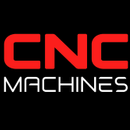Comparing Vertical and Horizontal Machining Centers: Pros, Cons, and Applications

Comparing Vertical and Horizontal Machining Centers: Pros, Cons, and Applications
In the realm of CNC machining, selecting the appropriate type of machining center can significantly impact productivity, efficiency, and the quality of the final product. Vertical Machining Centers (VMCs) and Horizontal Machining Centers (HMCs) are two primary CNC types of equipment used in the machining industry. This article compares these two types, discussing their pros, cons, applications, setup times, and output, along with a case study to illustrate their practical use in a machine shop.
Vertical Machining Center (VMC)
Pros
- Cost-Effective: VMCs are generally less expensive than HMCs, making them an attractive option for smaller shops or those with budget constraints.
- Ease of Use: The vertical orientation makes it easier for operators to see and access the workpiece, which can simplify setup and adjustment processes.
- Smaller Footprint: VMCs typically require less floor space, making them suitable for shops with limited space.
- Versatility: Suitable for a wide range of applications, including drilling, tapping, and milling.
Cons
- Chip Removal: Gravity causes chips to accumulate on the workpiece and tooling, which can affect surface finish and tool life if not managed properly.
- Limited to Smaller Workpieces: VMCs are generally better suited for smaller to medium-sized workpieces.
Applications
- Prototyping: Quick setup and versatility make VMCs ideal for prototyping.
- Short Production Runs: Ideal for shops that frequently change setups for different parts.
- Tool and Die Work: Commonly used for creating dies and molds due to their precision.
Setup Time
Generally faster than HMCs due to easier access to the workpiece and simpler fixturing.
Increased Output
Best for short runs and prototyping, where quick setup changes are needed.
Horizontal Machining Center (HMC)
Pros
- Chip Removal: The horizontal orientation allows for more efficient chip evacuation, which can improve surface finish and tool life.
- Production Efficiency: HMCs can work on multiple faces of a workpiece in a single setup, reducing cycle times and increasing throughput.
- Larger Work Envelope: Capable of handling larger and heavier workpieces due to their robust design.
- Automation Compatibility: Easier integration with pallet changers and automation systems for high-volume production.
Cons
- Higher Cost: Generally more expensive to purchase and maintain than VMCs.
- Complex Setup: More complex setup processes can require additional time and expertise.
Applications
- High-Volume Production: Ideal for production environments where high volumes of parts are manufactured.
- Heavy Workpieces: Better suited for larger, heavier parts that benefit from the efficient chip removal.
- Complex Geometries: Efficiently handle parts that require machining on multiple faces.
Setup Time
Longer setup times due to the complexity and the need for precision in fixturing and alignment.
Increased Output
Higher output in long production runs due to reduced cycle times and the ability to handle multiple operations in one setup.
Case Study: Precision Tech Manufacturing
Company Profile
Precision Tech Manufacturing is a mid-sized company specializing in high-precision components for the aerospace industry. The company invested in both VMCs and HMCs to optimize their production capabilities.
Challenge
Precision Tech needed to increase productivity for a high-volume order of aerospace components, which required precision machining on multiple faces of each part.
Solution
- VMCs were used for prototyping and short-run production. The quick setup times and ease of use allowed Precision Tech to develop and refine prototypes efficiently.
- HMCs were employed for the high-volume production of the finalized parts. The ability to machine multiple faces in a single setup significantly reduced cycle times and improved throughput.
Results
- Increased Productivity: The use of HMCs for high-volume production resulted in a 30% increase in productivity due to reduced cycle times and efficient chip removal.
- Enhanced Flexibility: VMCs provided the flexibility needed for prototyping and small batch production, allowing the company to quickly adapt to new orders and changes in design.
- Cost Efficiency: While the initial investment in HMCs was higher, the increased production efficiency and reduced labor costs led to a significant return on investment over time.
Choosing between a vertical and horizontal machining center depends on the specific needs of the manufacturing process. VMCs are ideal for smaller, versatile operations with frequent setup changes, while HMCs excel in high-volume, complex production environments. Understanding the pros and cons of each type, along with their applications, can help manufacturers make informed decisions to improve efficiency and output.
References
- "The Differences Between Horizontal and Vertical Machining Centers," CNC Masters, 2022.
- "Horizontal vs. Vertical Milling: What’s the Difference?" TORMACH, 2022.
- "The Benefits of Horizontal Machining Centers," Modern Machine Shop, 2021.
- "Vertical Machining Centers," Haas Automation, 2023.
- "The Advantages of Horizontal Machining Centers," Okuma, 2022.


